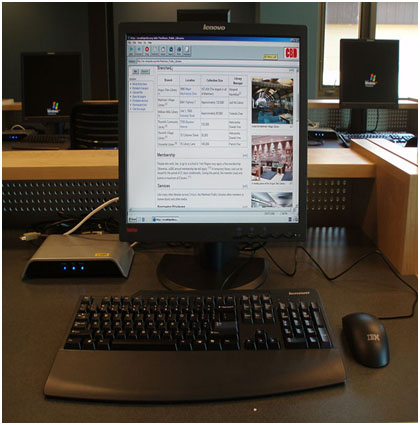
Walmart, the world's largest retailer, announced this week that they are planning to put green/sustainability labeling on all of their products within the next five years.
Walmart today announced plans to develop a worldwide sustainable product index during a meeting with 1,500 of its suppliers, associates and sustainability leaders at its home office. The index will establish a single source of data for evaluating the sustainability of products.
The company will ask their suppliers (all their suppliers) to answer fifteen questions:
1. Have you measured your corporate greenhouse gas emissions?
2. Have you opted to report your greenhouse gas emissions to the Carbon Disclosure Project (CDP)?
3. What are your total greenhouse gas emissions reported in your most recently completed report?
4. Have you set publicly available greenhouse gas reduction targets? If yes, what are those targets?
5. If measured, please report total amount of solid waste generated from the facilities that produce your product(s) for Wal-Mart Inc for the most recent year measured.
6. Have you set publicly available solid waste reduction targets? If yes, what are those targets?
7. If measured, please report total water use from the facilities that produce your product(s) for Wal-Mart Inc for the most recent year measured.
8. Have you set publically available water use reduction targets? If yes, what are those targets?
9. Have you established publicly available sustainability purchasing guidelines for your direct suppliers that address issues such as environmental compliance, employment practices, and product/ingredient safety?
10. Have you obtained 3rd party certifications for any of the products that you sell to Walmart? If so, from the list of certifications below, please select those for which any of your products are, or utilize materials that are, currently certified.
11. Do you know the location of 100% of the facilities that produce your product(s)?
12. Before beginning a business relationship with a manufacturing facility, do you evaluate their quality of production and capacity for production?
13. Do you have a process for managing social compliance at the manufacturing level?
14. Do you work with your supply base to resolve issues found during social compliance evaluations and also document specific corrections and improvements?
15. Do you invest in community development activities in the markets you source from and/or operate within?
The company will apply a rating to the products based on an algorithm yet to be announced. It is unclear how they will determine the accuracy of the replies -- what oversight, if any, will be instituted and applied. Also yet to be announced will be how that rating will be displayed. It may be as simple as a green tag or as complicated as a link on the product to a customer's smart phone which will then give the customer detailed information about the product's sustainability.
Environmental groups laud this attempt to go green at the corporate level and point out that, as the world's largest retailer, Walmart may be best positioned to pull this off. Corporate associations and academics have raised concern of increased costs. Walmart's spokesman disagrees and says that with less packaging there will be lest cost (concentrated detergent is cited as an example).
“Nobody else could pull this off,” said Michelle Harvey at Environmental Defense Fund, one of the groups involved in the creation of the index.
The question, of course, is whether even Wal-Mart can make it happen.
“I think it’s going to be a lot of work for a lot of people,” said Jon Johnson, a professor in the Sam M. Walton College of Business at the University of Arkansas, whom the company asked to help create the index, along with Jay Golden at Arizona State University. “But obviously we’re optimistic about the prospects.”
The idea of an index, a single sustainability standard across the corporate world, that companies and suppliers could follow raises the ante for other large corporate retailers (i.e. Costco, Target, Kmart, etc) to participate or loose out on environmentally conscious consumers. It also puts pressure on manufacturers and suppliers of all stripes to change their business model to the index or lose out as environmentally conscious consumers chose other products over theirs.
Walmart is projecting a five year span to (figure out how to) implement this. It will be interesting to see if the sheer size and influence of the 'big box' retailer can make this a tipping point toward sustainability.
[ 1 comment ] ( 120 views ) | [ 0 trackbacks ] | permalink |




 ( 3 / 2497 )
( 3 / 2497 ) When my consulting clients ask me why they should green their office in a recession when monetary pressures are only expected to increase, I remind them that the Chinese use two separate brush strokes to write the word 'crisis':

One character stands for danger; the other for opportunity.
In a crisis, be aware of the danger-but recognize the opportunity.
Never has that been more accurate than now, for with the green approach business can not only help the planet to forestall long term danger (for which they themselves will have to pay in increased costs as resources become scarce and as business becomes impacted by inclement weather), but they also reduce their bottom line while improving morale and productivity of their workforce.
How is this done?
The first place the office can look is to technology that uses or relies upon electricity. This can range from the simple coffeemaker left on all night to the replacement of servers to a thin client (pictured below) resulting, in some cases, in a significant reduction of a company’s annual expense.

But other efforts can pay dividends, as well, in ways that are not quantifiable, such as organizing the workforce to come together as a green team to unplug adaptors when not in use or to compete with one another for prizes or dividends by recycling ink cartridges and other expensive items.
These efforts can become rallying points for the office or cooperation which then leads to increased productivity.
Another area is with computers and monitors that use less energy and that will, eventually (hopefully) be made without the intense greenhouse gasses that are now part of the LCD and Plasma manufacture process. There are companies, such as VIZIO (see below; note: this is not an endorsement), that are introducing a line of energy efficient models likely to drop in price over time (some are low cost now).

These products are rated to pull less electricity to run. Put that together with any sized office and one can see significant savings on their bill over time.
The paperless office is another area that has been talked about but how realistic has it become? Most work situations do require the use of paper and that is another potential for savings.
I am reminded of a scene in Robert Graves’ I CLAUDIUS, where Antonia, the daughter of Marc Antony, complains that her family has thrown away perfectly good paper that had barely been written upon.

(There’s that other part of the story where she finds a plot against Tiberius Caesar on one of those discarded scraps… while intrigue and politics can be an inevitable part of the office, I doubt we have to worry about it to the extent of the trials and tribulations of Ancient Rome).
But Antonia had a good idea that still holds true. While many companies buy 95 brightness or above virgin paper and spend a great deal to see most of it discarded, recycled paper of a lesser or equal brightness can work perfectly well for the day to day activities in an office and, again, the effort to then recycle afterward can be an opportunity to build community within the office.
Then there is telecommuting as not every community needs to be in the same physical location and here’s where significant savings can be achieved. There’s been resistance to this option in offices as managers struggle to keep their workforce motivated and in communication with one another. However, the combination of technology and incentives can help to cut the wheat from the chaff and allow an office to then reduce its energy footprint and the need to buy equipment (as many home office workers provide their own).
How is this done? Start slowly and use incentives to allow workers to take one day or half day a week at home so that you can evaluate their performance. Use meeting software (such as virtual e-rooms) that allow real time interaction and set up video to video (most computers can provide this now) for meetings. This can then be part of a reward for the recycling efforts that help to reduce the bottom line (a new ink cartridge can cost many times more than a refilled version).
When a worker does not show the discipline to turn in their work effectively or requires more communication than had been indicated by their onsite performance, offsite work can also be a valuable tool for assessing strengths and weaknesses. Such a worker can then be mentored by another who does not have performance issues with offsite effort. If that does not work, you’ve identified who you can rely upon for offsite (and reduced cost work) and who will be the worker you will assign to the office to be the anchor you will need onsite.
As for the thin client concept, this requires onsite evaluation as it is one of the most significant financial commitments a company can make to their infrastructure. The advantages are that thin client server configurations can also reduce a company’s power consumption by such a significant percentage, while upgrading the company’s systems to a more modern technology, the company will see a direct return on investment within a very short period of time while enjoying – again – increased productivity by their workforce through better systems.
Thin client technology can also eliminate the need for controlled environments, such as specialized air conditioning; quite often a company’s most significant power outlay.
It is important, however, not to rush to the thin client model in isolation. It requires, in my opinion, an experienced consultant to perform a requirements and business reengineering analysis or it could cost a company more than it saves.
One of the most rewarding areas for greening your office has to do with green space and sustainability for those who have that control over their environment. Planting trees for shade on a building’s western exposure can cut significant consumption costs in a hot climate while reducing the need to water lawns – or better yet – the drought resistant plants (aka xeriscaping - symbol below) you’ve put in place instead of your lawn.

Finally, there are the easiest and most socially responsible options for greening your office. Using soy ink in your toners is an example. Furniture produced from sustainable forestry is another (this is a very important consideration as the EU has just reported that the cost of forest loss exceeds the current financial crisis). LED or compact florescent light bulbs, of course (I prefer LED; longer life, less consumption, easier on the eyes and not full of harmful chemicals). There are many cleansers and solvents that don’t pollute the earth and break room supplies that are recycled (or better yet, mugs for employees instead of paper cups!).
The list is endless as are the supplies that are now available. It only requires only the decision to order one thing over another by incentivizing your procurement personnel to choose the green option over the alternative. None of it has to cost more than you already spend and, in many cases, it will be less and that is opportunity in a recession to receive dividends for the earth.
The timing for the green office has never been better.
Bio:
Janet Ritz is the publisher and managing editor of THE ENVIRONMENTALIST, an environmental contributor to The Huffington Post and a green consultant that specializes in reducing costs and carbon footprint.
[ 3 comments ] ( 351 views ) | [ 0 trackbacks ] | permalink |




 ( 3 / 2523 )
( 3 / 2523 ) 


 Looking for a Green Office Solution?
Looking for a Green Office Solution?